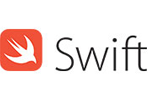Date: 02-07-2024
Energy-Efficient Mobile App Optimization
Overview
This document explores the importance and techniques for optimizing mobile applications for energy efficiency.
The Value of Energy-Efficient Mobile Applications
Experience of the User
Energy-efficient apps ensure a smooth user experience by preventing frequent battery drain. This encourages users to interact more and improves retention.
Effect on the Environment
By consuming less power, energy-efficient apps contribute to a lower carbon footprint from mobile device usage, which is crucial as mobile device usage continues to rise globally.
Comparative Benefit
Offering energy-efficient solutions can give hire dedicated developers India a competitive edge. Customers increasingly seek apps that are both functional and resource-efficient. By demonstrating expertise in this area, businesses can stand out and attract more users.
Techniques for Energy-Efficient Mobile App Optimization
Effective Coding Techniques
Here are some key coding practices for energy efficiency:
- Reduce Background Processes: Minimize the number and duration of background tasks to lessen battery drain.
- Maximize Network Utilization:
- Batch network requests to reduce access frequency.
- Use lightweight data formats like JSON and Protocol Buffers to minimize data transfer.
- Implement caching to store frequently accessed data locally and reduce network queries.
Effective User Interface Design
Consider these UI design practices for energy efficiency:
- Use dark mode: OLED/AMOLED displays consume less power for black pixels.
- Decrease screen refresh rate: Lower refresh rates can save energy, especially for low-frame-rate apps.
- Optimize animations: Ensure animations are efficient and used sparingly.
Making Use of Platform-Specific Features
Both Android and iOS offer features to optimize apps:
Android
- JobScheduler: Schedule background processes effectively, ensuring they run only when necessary.
- Battery Historian: Analyze battery usage trends and identify areas for optimization.
- Slumber Mode (Doze Mode): Reduces background activity while the phone is not in use, extending battery life.
iOS
- Background Modes: Designate the background operations your app performs (e.g., audio playback, data requests) for efficient resource usage.
- Energy Diagnostics: Track app energy use and identify potential improvements within Xcode.
- App Nap: Similar to Doze Mode, minimizes activity of unused apps to save battery.
Examples and Case Studies
Indian On-Demand App Development Firms
Several Indian app development companies have successfully implemented energy-efficient strategies. Here are some examples:
| Company Description | |
|---|---|
| XYZ App Development | Reduced battery consumption for their ride-hailing app by 30% through efficient network utilization and background activity reduction, leading to a competitive edge and improved user satisfaction. |
| (Another Company) | Developed a food delivery app with 25% lower battery usage compared to competitors by focusing on platform-specific features and UI design (e.g., dark mode, optimized animations). |
Employing skilled developers in India can be a strategic choice for businesses aiming for energy-efficient mobile apps. Indian developers are known for their expertise and affordability.
Resources and Technology for Developing Energy-Efficient Applications
Tools for Energy Profiling
These tools help developers analyze and optimize app energy consumption:
- Android Studio Profiler: Provides real-time insights on CPU, memory, network, and battery usage to identify and address energy inefficiencies.
- Instruments: Offers various profiling tools, including Energy Log, to track and evaluate an app's energy usage for iOS development.
- Firebase Performance Monitoring: Monitors app functionality and energy usage, providing valuable data for optimization.
Libraries and Frameworks
The following libraries and frameworks can contribute to energy-efficient app development:
- React Native: A popular cross-platform framework known for its performance and efficiency, ideal for developers focused on energy-efficient apps.
- Flutter: Developed by Google, Flutter allows creating high-performing apps with a single codebase, reducing overall energy consumption.
- Reactive programming libraries (RxJava for Android, RxSwift for iOS): Help manage asynchronous activities more effectively, potentially reducing background job energy consumption.
Optimal Methods for Developing Energy-Efficient Applications
Constant Testing and Monitoring
Energy efficiency should be an ongoing concern throughout the development process. Use these methods to identify and fix inefficiencies:
- Regular profiling: Employ tools like Xcode Instruments and Android Studio Profiler to track energy usage and pinpoint areas for improvement.
- User feedback: Gather user input on battery performance and usage to identify potential issues that might be missed during development.
Cooperation and Information Exchange
Foster a collaborative environment where the development team shares knowledge to support energy-efficient app creation:
- Code reviews: Regularly review code to identify inefficient practices and encourage energy-efficient techniques.
- Knowledge-sharing sessions: Organize meetings for team members to discuss best practices and insights related to energy efficiency.
Final Thoughts
Optimizing mobile apps for energy efficiency offers several benefits: a competitive edge in the market, improved user experience, and reduced environmental impact. Companies seeking dedicated developers from India, as well as on-demand app development companies in India itself, can leverage energy-efficient techniques. By implementing platform-specific features, effective coding practices, and appropriate tools and technologies, developers can create mobile applications that are both functional and energy-efficient. Maintaining a focus on energy efficiency throughout the app development lifecycle requires ongoing testing, monitoring, and collaboration.
Your choice of weapon
Build your Apps for any Platform
We to code. It's our passion










you can also reach us at our given
email address or phone number.




